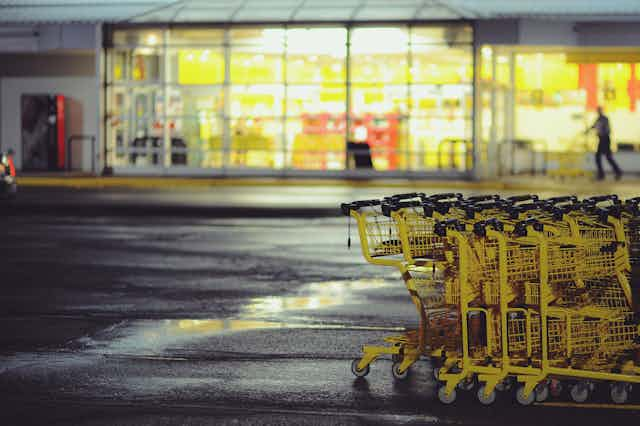Retail food prices are not moving much these days. They are barely higher than last year, with a modest increase of 0.5 per cent.
In fact, according to Statistics Canada, prices dropped over all by 0.7 per cent over the winter months. South of the border, U.S. grocers are dealing with the same issue. Since our economy has some momentum, you would expect food retail prices to inch higher. But they are not moving, and for several reasons.
Grocers will always pick the right time to raise prices. Unemployment is near historic lows, consumer confidence is relatively high and inflation is inching upward — normally, these are perfect market conditions. Not so at the moment.
For one thing, both Walmart and Amazon are at war trying to attract customer loyalty through online strategies. Walmart’s online food sales were disappointing in the last quarter, but sales are growing nonetheless.
And generic brands are becoming increasingly popular as consumers trade down. Brands are becoming less important to a growing number of consumers, so trading down has become less embarrassing and more of a statement consumers want to make while shopping.
Loyalty — the most powerful tool a grocer needs to increase sales — is almost non-existent nowadays. The power has now firmly shifted into the hands of consumers, and grocers know it. With interesting tweaks to their strategy, profits are still there, but market shares are not.
Cutting costs
For the past few years, grocers have been cutting costs and passing the savings onto consumers, all the while hoping that the perfect inflationary environment would return so that they could raise prices again. The return of food inflation was exactly what the grocery industry was hoping for, but so far, results have been disappointing.
What they did not expect was to lose the ability to increase retail prices. With higher general inflation, costs are increasing and grocers are now getting hit in more ways than one.
Grocers can try to justify their poor financial performance, citing higher minimum wages and how much pressure they are under, but top-line growth revenues are painfully idle for most of them. All grocers are moving aggressively on their online strategy, and all are also looking at home delivery, as soon as possible.
In many markets — Toronto, Guelph, Ont., Halifax, Vancouver, among others — the number of stores is increasing. There are almost 39,000 food and beverage stores in Canada, which is up more than five per cent from about two years ago.
It seems some grocers are remaining in this funk of building new stores just for the sake of it. Bricks-and-mortar stores may remain a sign of business success from the perspective of some executives, but this just isn’t true anymore.
Pressures are also coming from the online market, as more small- and medium-sized companies are chipping away at market shares in some specific food categories. It’s not just Amazon, but a portfolio of intriguing small companies using virtual platforms to brand and commercialize high-value products that cannot be found elsewhere, like Bonduelle or Naak.
Innovation could lead to growth
Innovation is always seen as a logical path to growth in the grocery business, but how we define innovation in food is also changing.
Many innovative products are becoming known in Canada, like the cricket-protein bars sold by Naak, but most are not sold by major grocers. They are sold online or through independent shops.
This is another major problem that grocers in this country will need to fix and quickly. If grocers’ capacity to increase revenues is hampered by more competition, the consequences of these pressures will be shared with food processors and others in the supply chain. To make matters worse, relationships within the food value chain have not been great in recent years.
Despite the food retailing woes we are seeing in North America, food services is a different story entirely.
Prices have gone up by more than four per cent since the beginning of the year, and the sector is not showing signs of slowing down.
The convergence between retailing and service will be a definite attraction for a food-retailing sector desperate for growth.
Read more: The Grocerant: How smart grocery stores are becoming hybrids
The grocery sector, however, is facing swift changes in consumer preferences as customers clamour for different products and services. Consequently, the number of food stores we have in Canada is likely not sustainable. Don’t be surprised to increasingly hear about more grocery stores closing in months to come.

